Showing 1753–1764 of 2125 resultsSorted by popularity
-
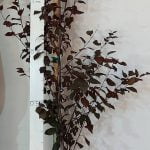
Prunus Purpurea 20lt
R495.00Add to cartPrunus Purpurea 20lt
Common Name: Purple Leaf PlumFull Sun
Medium Watering
Wind Tolerant
Deciduous -
Sale!

Podocarpus Henkelii 20lt
Original price was: R475.00.R350.00Current price is: R350.00.Add to cartPodocarpus Henkelii 20lt
Common Name: Henkel’s YellowwoodFull Sun
Semi Shade
Evergreen
Medium Watering
Indigenous -
Sale!
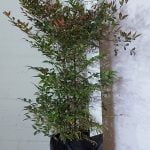
Nandina Domestica 20lt
Original price was: R595.00.R425.00Current price is: R425.00.Add to cartNandina Domestica 20lt
Common Name: Heavenly Bamboo -
Sale!
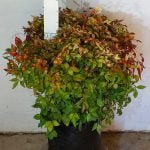
Nandina Domestica Pygmaea 20lt
Original price was: R595.00.R425.00Current price is: R425.00.Add to cartNandina Domestica Pygmaea 20lt
Common Name: Dwarf Heavenly Bamboo -
Sale!

Kiggelaria Africana (Wild Peach) Tree 20lt
Original price was: R550.00.R399.99Current price is: R399.99.Add to cartKiggelaria Africana Tree 20lt
Common Name: Wild PeachFull Sun
Evergreen
Nice for a Hedge
Attracts Birds -

Kigelia Africana (Sausage Tree) 20lt
R425.00Add to cartKigelia Africana 20lt
Common Name: Sausage Tree -
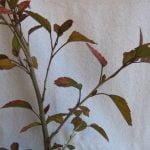
Hibiscus Autumn Leaf Red 20lt
R425.00Add to cartHibiscus Autumn Leaf Red 20lt
Full Sun
Semi Shade
Evergreen
Medium Watering -
Sale!
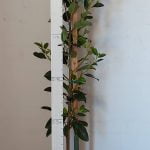
Ficus Rubiginosa 20lt
Original price was: R475.00.R350.00Current price is: R350.00.Add to cartFicus Rubiginosa 20lt
Common Name: Rusty Fig -

-
Sale!
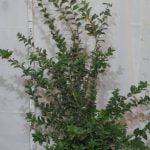
Dovyalis Caffra Shrub (Kei Apple) 20lt
All Plants, Apple and Pear Trees, Full Sun Plants, Hedging Plants, Indigenous Plants, Semi Shade PlantsOriginal price was: R550.00.R379.99Current price is: R379.99.Add to cartDovyalis Caffra Shrub 20lt|
Common Name: Kei AppleFull Sun
Semi Shade
Evergreen
medium Watering
Indigenous
Hedging PlantDovyalis caffra, commonly known as the Kei Apple or Kaffir Plum, is a small to medium-sized tree native to southern Africa. It belongs to the Flacourtiaceae family. The Kei Apple is valued for its edible fruits and is also cultivated as an ornamental plant.
Appearance: The Kei Apple is an evergreen tree with a dense, rounded crown. It can grow up to 4-6m in height and has thorny branches.
Leaves: The leaves are glossy, dark green, and elliptical in shape, with prominent veins. They are often serrated or toothed along the edges.
Flowers: The tree produces small, inconspicuous, and greenish-yellow flowers that are not particularly showy. They are typically dioecious, meaning male and female flowers are borne on separate trees.
Fruits: The Kei Apple is most known for its plum-sized, round to ovoid fruits, which are edible and have a sweet and tangy flavour. The fruits ripen to a yellowish colour when fully mature and can be eaten fresh or used to make jams, jellies, and sauces.
Growth Requirements: Dovyalis caffra prefers well-draining soil and can tolerate a range of soil types. It grows best in full sun but can also tolerate partial shade. The tree is relatively drought-tolerant once established, but regular watering can help improve fruit production.
Wildlife Attraction: The fruits of the Kei Apple are not only enjoyed by humans but also attract birds and other wildlife, making it a valuable addition to gardens and landscapes that support local biodiversity.
Uses: Apart from its culinary uses, the Kei Apple is sometimes used as a hedge or barrier plant due to its thorny nature. In some regions, the tree is also used for erosion control.
-
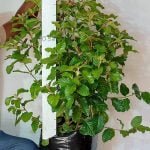
Curtisia Dentata Shrub 20lt
R445.00Add to cartCurtisia Dentata Shrub 20lt
Common Name: Assegai; AssegaaiFull Sun
Indigenous
Medium Watering till establishedCurtisia dentata, commonly known as the Assegai tree, is a tree species in the Curtisiaceae family. It is native to Southern Africa, found primarily in South Africa, Eswatini (Swaziland), and Mozambique.
Botanical Characteristics
Leaves: The leaves of Curtisia dentata are simple, opposite, and elliptical with a glossy dark green upper surface and a paler underside. They have finely toothed margins, which is reflected in the species name “dentata.”
Bark: The bark is grey to brown and becomes rough and fissured with age. It is often used in traditional medicine.
Flowers: The tree produces small, white to creamy-yellow flowers arranged in dense clusters. These flowers are typically seen in spring to early summer.
Fruit: The fruits are small, red to dark purple drupes that attract birds and other wildlife.Growing Conditions
Climate: Curtisia dentata thrives in subtropical and temperate climates. It is commonly found in evergreen forests, along forest margins, and in moist, sheltered ravines.
Soil: The tree prefers well-drained, fertile soils rich in organic matter. It can grow in a variety of soil types but does best in loamy or sandy soils.
Watering: While it can tolerate short periods of drought, it prefers consistent moisture and benefits from regular watering, especially during dry spells.Ecological Role
Habitat: The Assegai tree is an important component of its native forest ecosystems, providing food and habitat for various bird species and insects.
Pollination: The flowers attract a range of pollinators, including bees and other insects.Uses
Timber: The wood of Curtisia dentata is hard, heavy, and durable, making it highly valued for furniture, flooring, and construction. It was traditionally used for making assegai spears, from which it gets its common name.
Traditional Medicine: The bark and leaves are used in traditional African medicine to treat various ailments, including stomach issues, respiratory problems, and infections. The bark is known for its astringent properties.
Ornamental: Its attractive foliage and flowers make it a desirable tree for ornamental planting in gardens and parks.Nutritional and Health Benefits
Medicinal Uses: Extracts from the bark and leaves are used for their anti-inflammatory, antibacterial, and astringent properties. They are often used to make decoctions and infusions in traditional medicine.
Cultivation and Management
Propagation: Curtisia dentata is typically propagated from seeds, which should be sown in a well-draining soil mix. Seeds may benefit from a period of cold stratification to improve germination rates.
Growth Rate: The tree has a moderate growth rate, with young plants requiring protection from extreme conditions until established.
Management: Pruning may be necessary to maintain a desirable shape and remove any dead or diseased branches. Regular watering and mulching can help maintain soil moisture and health.
Conservation and Environmental Importance
Soil Conservation: The tree’s root system helps stabilize soil, preventing erosion in forested areas.
Biodiversity: By providing food and shelter, Curtisia dentata supports local biodiversity and contributes to the health and stability of its ecosystem.Curtisia dentata is a valuable tree species both ecologically and economically, with its durable timber and medicinal properties. Its role in native forests and adaptability to different growing conditions make it an important species for conservation and sustainable use.
-
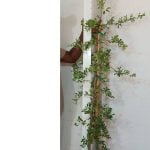
Commiphora Edulis 20lt
R455.00Add to cartCommiphora Edulis 20lt
Common Name: CorkwoodFull Sun
Indigenous
Medium Watering
